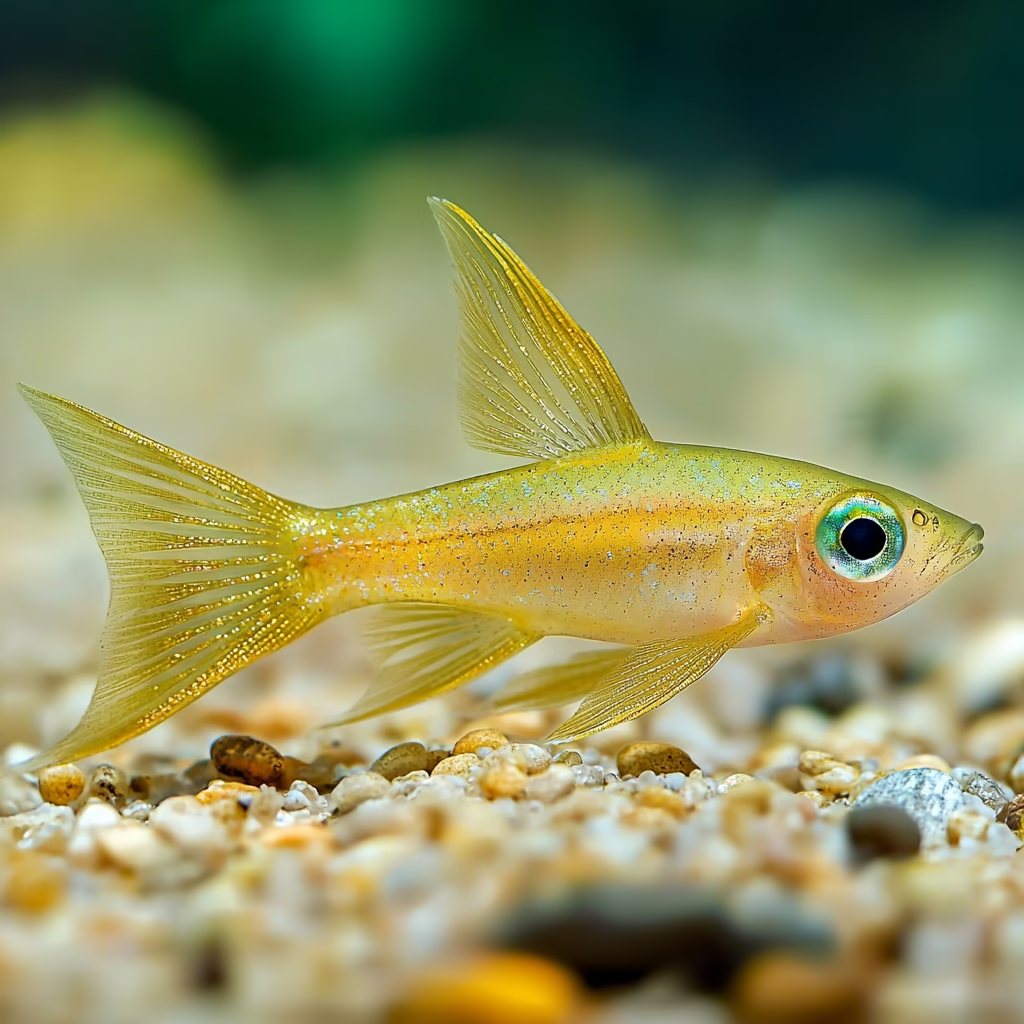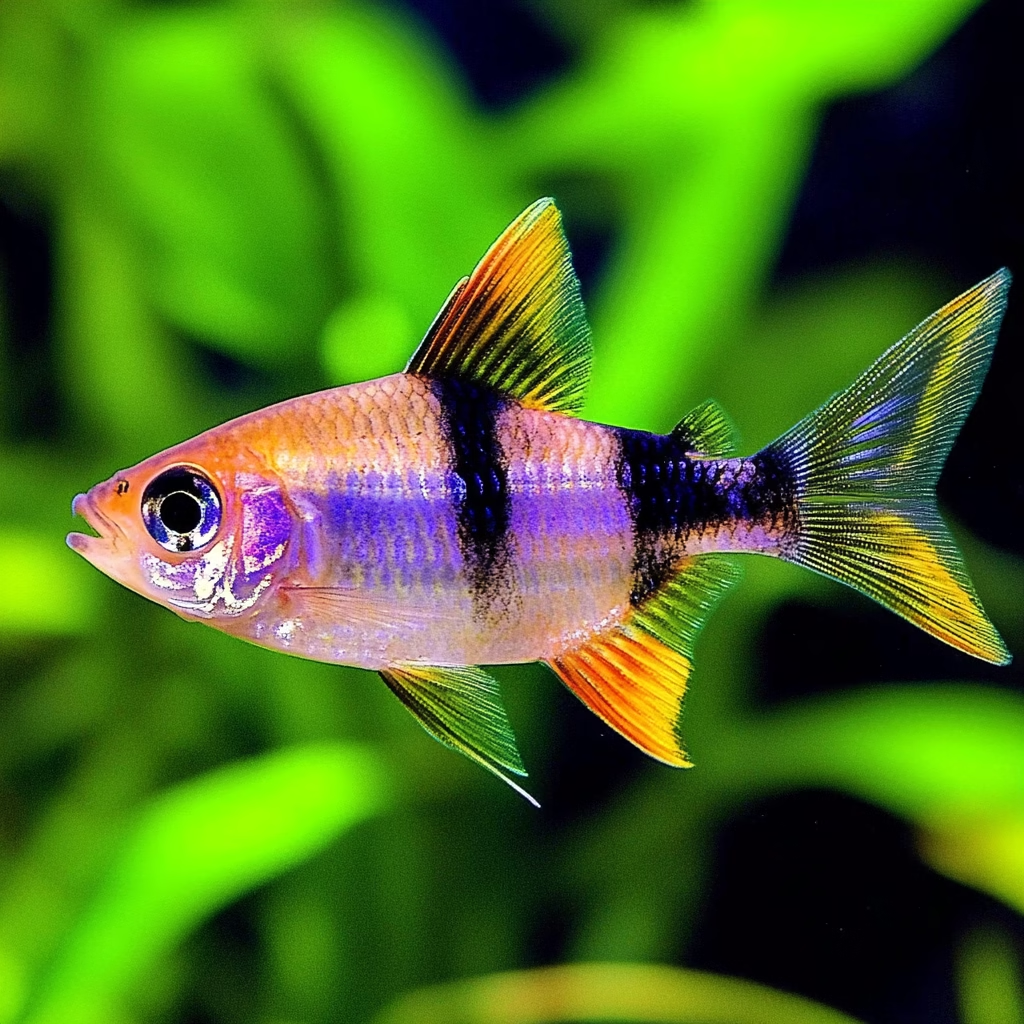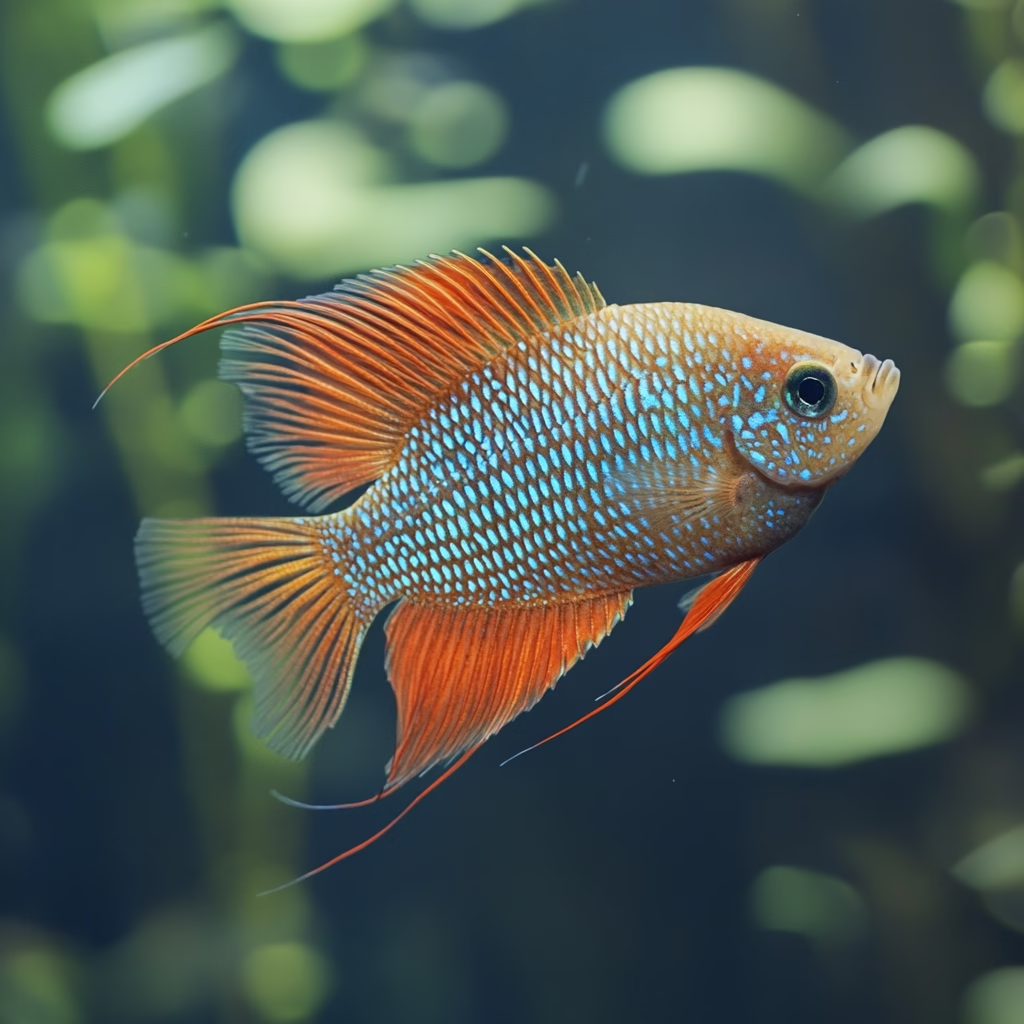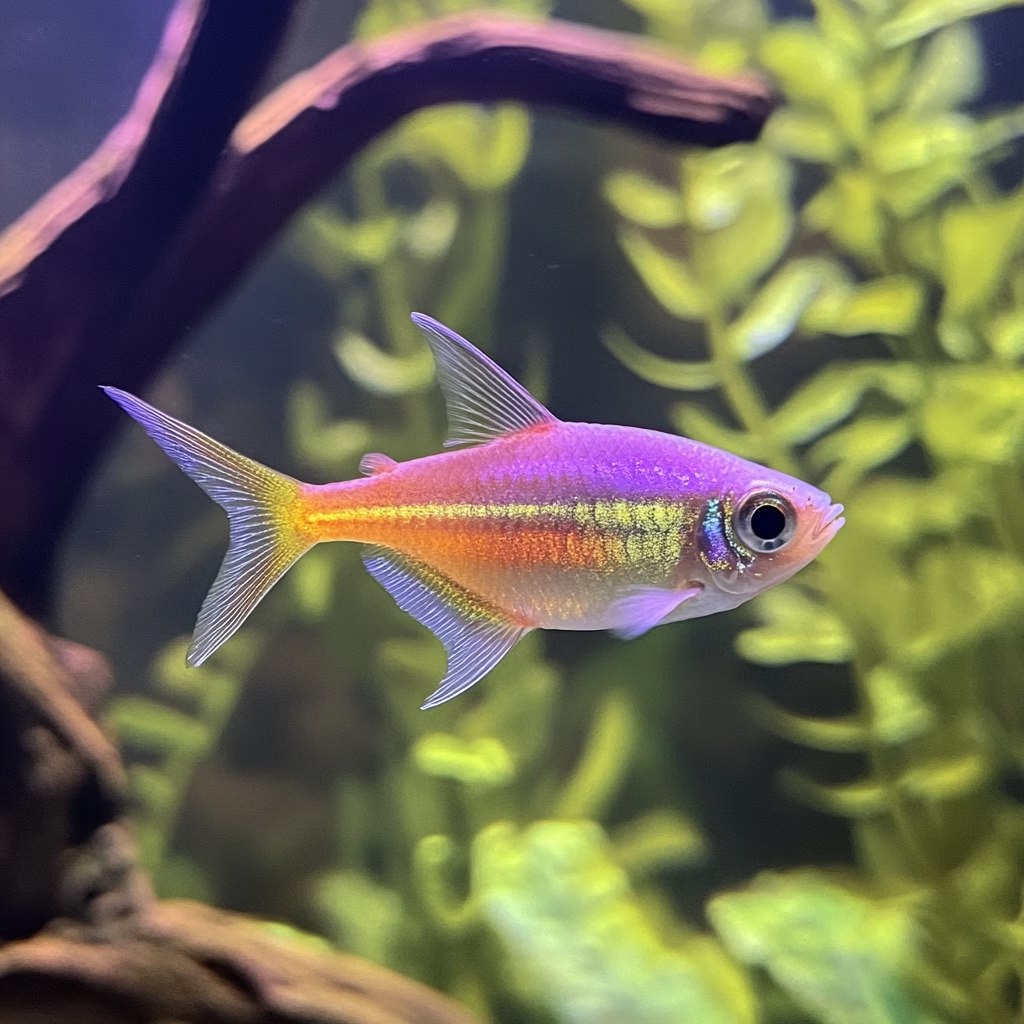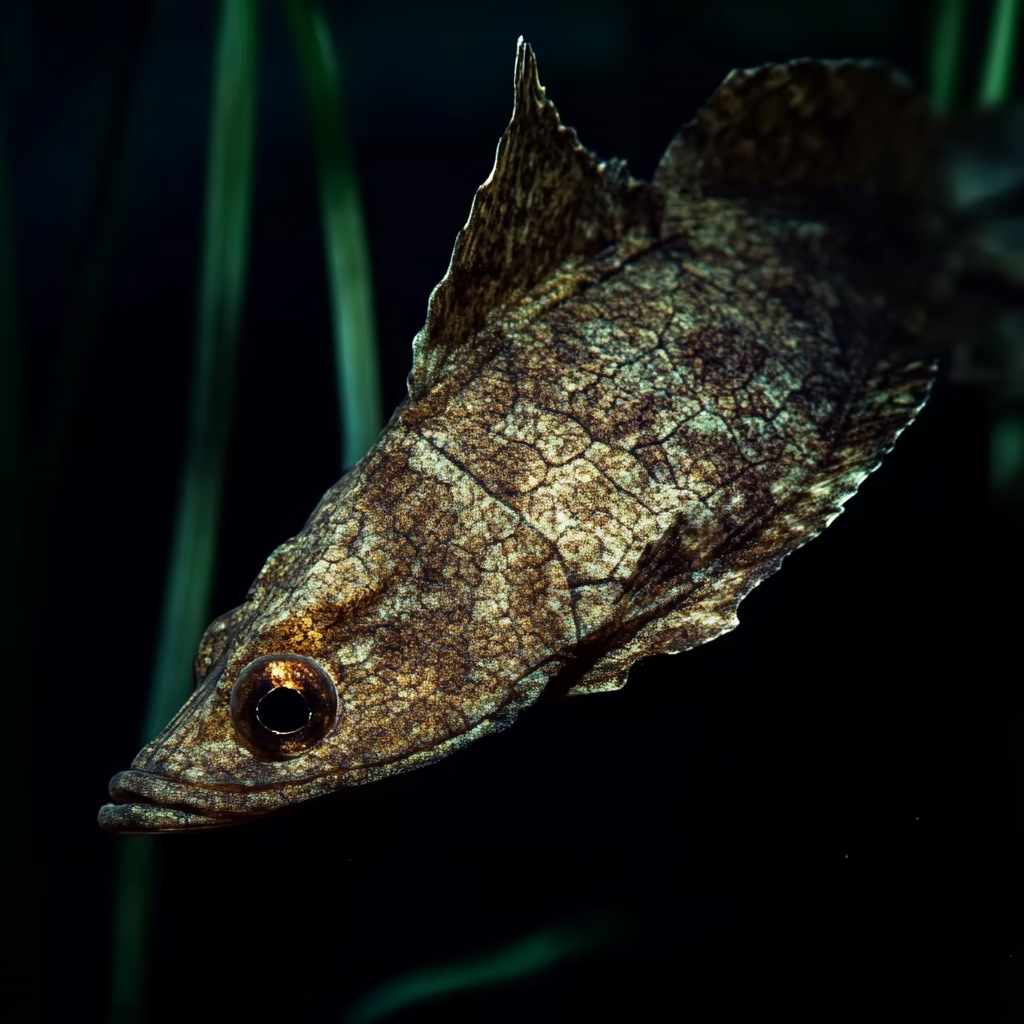The forktail rainbowfish (Pseudomugil furcatus) stands as one of the most captivating freshwater species available to aquarium enthusiasts. With its distinctive forked tail, iridescent coloration, and peaceful temperament, this small but striking fish has earned a devoted following among hobbyists worldwide. This comprehensive guide explores everything you need to know about forktail rainbowfish—from their natural habitat and appearance to proper care requirements and breeding techniques.
Origins and Natural Habitat of the Forktail Rainbowfish
Native to the coastal streams and rivers of northern Papua New Guinea and parts of Australia’s Cape York Peninsula, the forktail rainbowfish thrives in clear, moderately flowing waters with dense vegetation. These fish typically inhabit the middle water column in streams that feature a mix of open swimming areas and protective plant cover.
In the wild, forktail rainbowfish are found in both freshwater and slightly brackish conditions, demonstrating their remarkable adaptability. The pristine waters they call home are typically warm (72-82°F), slightly acidic to neutral (pH 6.5-7.5), and enriched with natural botanicals from surrounding vegetation.
Physical Characteristics and Identification
The forktail rainbowfish is immediately recognizable by several distinctive features:
Distinctive Forked Tail
True to its name, the most identifying characteristic of the forktail rainbowfish is its deeply forked caudal fin, which creates an elegant silhouette as the fish glides through water.
Size and Body Shape
These are relatively small fish, with adults typically reaching only 1.5 to 2 inches (4-5 cm) in length. They possess a slender, compressed body shape that enables quick, agile movements.
Stunning Coloration
Male forktail rainbowfish display the most vibrant colors, featuring:
- Shimmering blue-green bodies with iridescent scales that change hue depending on light angle
- Striking yellow to orange fin margins
- Black edging on the dorsal and anal fins
- Electric blue spots scattered across their fins
Females are more subdued in coloration but still attractive, with silvery bodies and less pronounced fin coloration. This sexual dimorphism makes it relatively easy to distinguish between males and females.
Aquarium Requirements for Healthy Forktail Rainbowfish
Creating the ideal environment for forktail rainbowfish involves careful attention to several key factors:
Tank Size and Setup
Despite their small size, forktail rainbowfish are active swimmers that require adequate space. A minimum 15-20 gallon tank is recommended for a small group, though larger is always better. The aquarium should include:
- Open swimming areas in the middle section
- Dense planting around the edges and back for refuge
- A dark substrate that helps accentuate their colors
- Gentle water flow that mimics their natural habitat
Water Parameters
Maintaining stable water conditions is crucial for the health of forktail rainbowfish:
- Temperature: 74-79°F (23-26°C)
- pH: 6.8-7.5
- Hardness: Soft to moderately hard (5-15 dGH)
- Ammonia and nitrite: 0 ppm
- Nitrate: Below 20 ppm
Filtration and Maintenance
A quality filter capable of processing the tank volume at least 4-6 times per hour provides the necessary water movement and biological filtration. Weekly water changes of 25-30% help maintain pristine conditions that forktail rainbowfish require to display their best colors and remain healthy.
Diet and Nutrition for Forktail Rainbowfish
In their natural habitat, forktail rainbowfish are micropredators, feeding primarily on small aquatic invertebrates, insect larvae, and zooplankton. In captivity, they thrive on a varied diet consisting of:
Dry Foods
- High-quality micro pellets designed for small fish
- Crushed flake food with high protein content
- Specialty foods formulated for rainbowfish
Live and Frozen Foods
- Daphnia and cyclops
- Baby brine shrimp (excellent for conditioning breeding stock)
- Microworms
- Small bloodworms
- Tubifex
For optimal health and coloration, feed small amounts 2-3 times daily rather than a single large feeding. This feeding schedule better mimics their natural grazing behavior and prevents digestive issues.
Social Behavior and Tank Mates
Forktail rainbowfish are peaceful, social creatures that display their best behavior and most vibrant colors when kept in groups. A minimum of six individuals is recommended, though larger groups of 10-12 create the most natural and impressive display.
Ideal Tank Mates
Compatible companions for forktail rainbowfish include:
- Other small rainbowfish species
- Peaceful tetras like neon tetras or ember tetras
- Rasboras
- Small corydoras catfish
- Peaceful dwarf gouramis
- Freshwater shrimp
Fish to Avoid
Avoid housing forktail rainbowfish with:
- Large or aggressive cichlids
- Fin-nipping species like tiger barbs
- Large predatory fish that might see them as prey
- Territorial bottom-dwellers that could stress them
Breeding Forktail Rainbowfish
Breeding forktail rainbowfish can be a rewarding experience for intermediate aquarists. While not overly difficult, successful reproduction requires attention to specific conditions:
Breeding Setup
A dedicated breeding tank of 10-15 gallons provides the best environment. Include:
- Fine-leaved plants like java moss or spawning mops
- Slightly acidic water (pH 6.5-7.0)
- Slightly elevated temperature (78-80°F)
- Gentle filtration or air-powered sponge filter
The Breeding Process
- Condition the breeding group with high-protein live foods for 1-2 weeks
- Introduce 2-3 males with 4-5 females to the breeding tank
- Males will display intensified colors and perform elaborate courtship dances
- Females deposit small, adhesive eggs among fine-leaved plants or spawning mops
- Breeding typically occurs in the morning hours
Unlike many egg-scatterers, forktail rainbowfish don’t typically eat their eggs, but removing the adults after spawning is still recommended. Eggs hatch within 7-10 days, and the tiny fry require infusoria or commercial fry food for their first meals before graduating to baby brine shrimp.
Common Health Issues and Prevention
Forktail rainbowfish are generally hardy when kept in proper conditions, but they can experience several health concerns:
Ich (White Spot Disease)
Appears as white spots resembling salt grains on the body and fins. Prevention includes maintaining stable water parameters and quarantining new additions.
Fin Rot
Usually results from poor water quality or physical injury. Regular water changes and avoiding rough decorations help prevent this condition.
Internal Parasites
May cause weight loss and listlessness. A varied diet and quarantine protocols for new fish are the best preventative measures.
Regular observation, consistent maintenance, and prompt intervention at the first sign of trouble are key to keeping your forktail rainbowfish healthy.
Conservation Status of Forktail Rainbowfish
While not currently listed as endangered, wild populations of forktail rainbowfish face increasing pressure from:
- Habitat destruction due to deforestation
- Water pollution from agricultural runoff
- Introduction of invasive species
- Climate change affecting their native waterways
Responsible aquarium keeping, including never releasing captive fish into the wild and supporting conservation efforts, helps ensure these beautiful fish remain for future generations to enjoy.
Conclusion: Why Forktail Rainbowfish Deserve a Place in Your Aquarium
The forktail rainbowfish represents the perfect balance of striking beauty and manageable care requirements. Their peaceful temperament, active swimming behavior, and iridescent coloration make them ideal centerpiece fish for community aquariums. Whether you’re a beginner looking to move beyond your first fish or an experienced hobbyist searching for something special, the forktail rainbowfish offers a captivating addition to any freshwater setup.
By providing the proper environment, nutrition, and companions, you’ll be rewarded with a vibrant, dynamic display that showcases one of nature’s most elegant aquatic designs. The forktail rainbowfish may be small in size, but its presence creates an outsized impact in any well-maintained aquarium.

